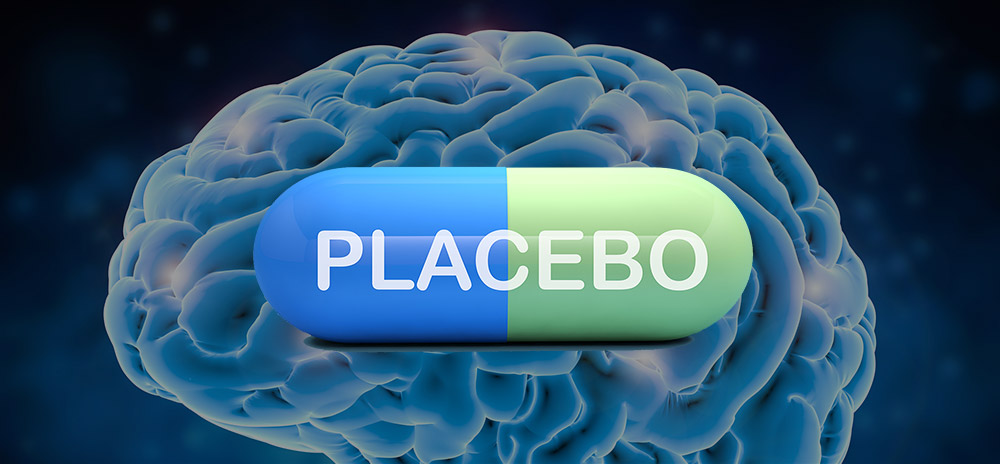Changed expectations: electrical stimulation of the brain can increase desired placebo effects and weaken unwanted nocebo effects, as a study has now shown. According to this, the targeted stimulation of parts of the frontal lobe influences neural connections that are apparently decisive for the placebo and nocebo effects. This could be used, for example, in pain therapy.
The placebo effect is more than just imagination: it triggers measurable changes in the protein signature in the blood, is even effective against serious diseases such as Parkinson’s and also works when the test subjects know that they are only receiving a dummy drug. Conversely, just the thought of unwanted side effects can actually lead to them – the so-called nocebo effect.
Placebo and nocebo effects play an important role both in scientific studies and in the treatment of patients. How and why they work is still unclear.
Placebo and nocebo effects in pain perception
A team led by Yiheng Tu from Harvard Medical School in Massachusetts has now investigated how certain brain regions influence the influence of placebo and nocebo effects on pain perception. “Previous studies have indicated that cognitive modulations in pain perception emanate from the dorsolateral prefrontal cortex, a brain region that processes expectations,” the researchers explain.
Building on this, Tu and colleagues stimulated this brain region in the forehead area of their test subjects with so-called transcranial direct current stimulation. Electrodes are used to apply an external electrical voltage to certain points on the scalp. This creates an electrical field inside the head that, depending on the polarity – anodic or cathodic – can have an activating or inhibiting effect on brain functions.
Manipulated expectations
Before starting the brain stimulation, the researchers first created the prerequisites for a placebo or nocebo effect in their test subjects. To do this, they applied three ointments to different places on their forearms and explained that one of the ointments contained the pain-relieving agent lidocaine, one the pain-relieving substance capsaicin and one no active substance. In reality, all ointments were the same drug-free preparation.
In order for the test persons to believe more strongly in the effect of the ointments, the researchers now added pain stimuli of varying strength to them: light pain stimuli in areas with the alleged lidocaine ointment, medium pain stimuli in areas with the neutral ointment and stronger pain stimuli in areas with the alleged capsaicin Ointment.
The researchers now divided their 81 test subjects into three groups: two groups received 20 minutes of brain stimulation each on three consecutive days, either inhibitory or stimulating, depending on the group. The third group served as a comparison and received only sham stimulation. Before, during and after the stimulation, the researchers recorded the subjects’ brain activity using functional magnetic resonance imaging (fMRI). On the third day, after the brain stimulation, the researchers repeated the experiment with the ointments. This time, however, all pain stimuli were equally strong.
Placebo effect intensified
The result: All test subjects perceived the pain most strongly in areas with the alleged capsaicin ointment, and weakest in areas with the alleged lidocaine ointment. The expectation of a reduction or increase in pain led to the fact that it actually occurred due to the placebo and nocebo effects.
How strong the respective effects were, however, depended on whether and what type of brain stimulation the test subjects had previously received. Both groups that received real brain stimulation showed a stronger placebo and a weaker nocebo effect than the control group. This increased the positive effect of the alleged lidocaine ointment on them, and the negative effect of the alleged capsaicin ointment decreased. On the other hand, the brain stimulation had no effect on general pain perception: the pain sensation in areas with the neutral ointment remained the same.
Effect depends on the polarity of the stimulation
The extent of the stimulation effect depended on the type of electrical field applied: in the group with cathodic stimulation of the frontal lobe, the placebo effect was particularly markedly increased, in the anodic group the nocebo effect was especially markedly weakened. From their fMRI data, the researchers conclude that the type of stimulation affects the linking of certain brain regions.
“In the cathodic group, we found increased connectivity between the right dorsolateral prefrontal cortex and the ventromedial prefrontal cortex when painful stimuli were applied to areas with lidocaine cream,” the researchers report. In the anodic group, on the other hand, the interaction with the insula was weakened when pain stimuli were applied to the areas with capsaicin cream. Both brain regions involved are associated with the processing of emotions and self-perception.
Can be used for pain therapy
“The potential to increase health-promoting placebo effects and / or reduce treatment-disruptive nocebo effects can have clinical significance,” the authors write. Further research is necessary in order to further explore the extent to which the findings can be used in the treatment of patients or in drug studies. (Proceedings of the National Academy of Sciences, 2021, doi: 10.1073/pnas.2101273118)
Quelle: Proceedings of the National Academy of Sciences
–


